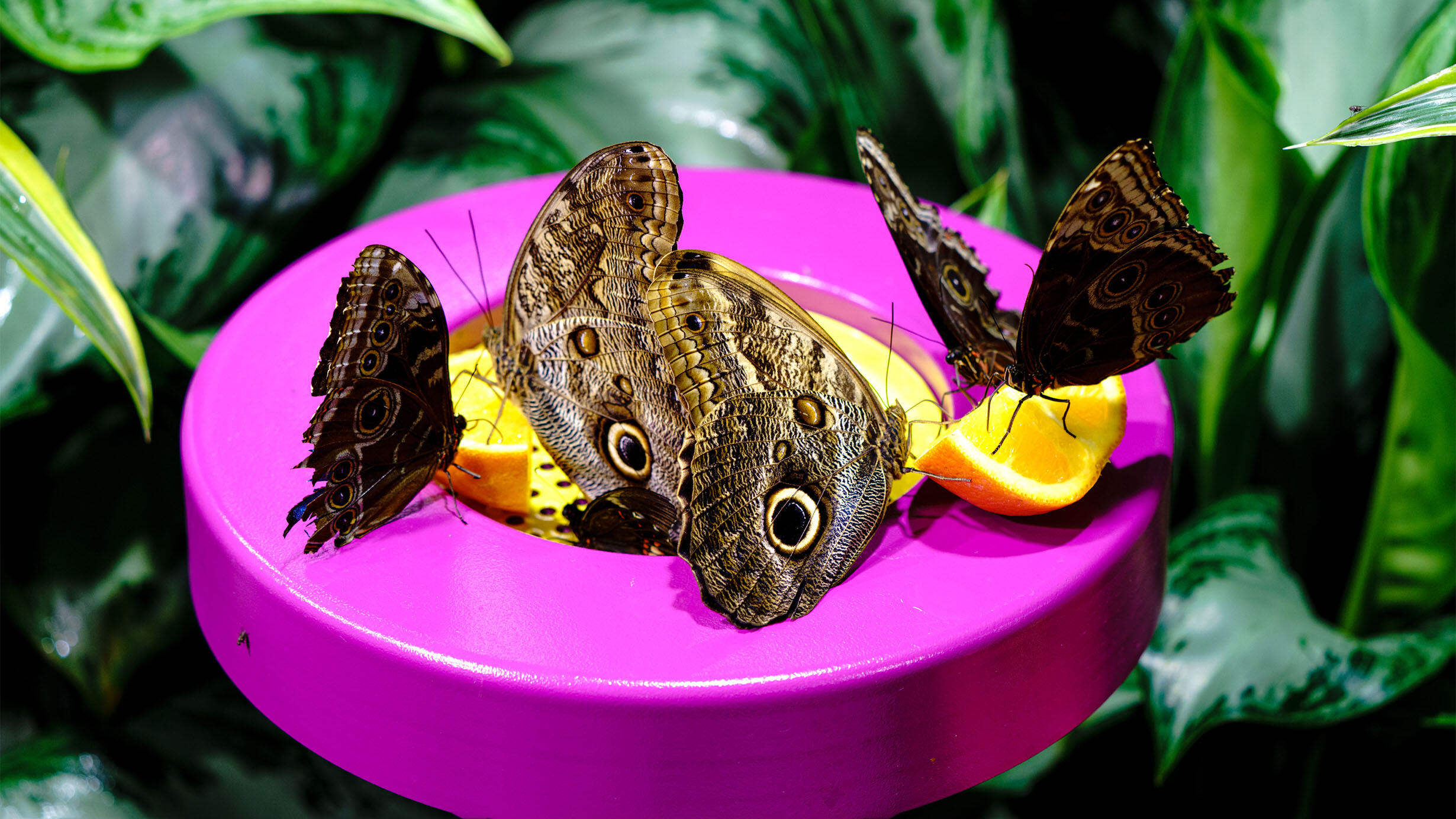Butterfly Behavior
Part of the Davis Family Butterfly Vivarium exhibition.
 Alvaro Keding/© AMNH
Alvaro Keding/© AMNH Eating
Most adult butterflies feed on nectar–a mixture of sugars, water, and other nutrients found inside flowers. They suck up the nectar through a long, straw-like appendage called a proboscis.
When they feed, butterflies get covered in pollen grains. Flowers and butterflies help each other: flowers use pollen to reproduce, and butterflies help transport it. After feeding, butterflies take pollen grains to new flowers when they fly away. Flowers have special shapes, patterns, and colors to attract butterflies and other pollinators.
Alvaro Keding/© AMNH
While most butterflies eat nectar, some, like the common morpho, drink juice from rotting fruit. Some of these butterflies poke through the fruit to find juice, and others drink juice at the surface.
Denis Finnin/© AMNH
Some butterflies sip fruit AND nectar. And for a small number of butterflies and moths, nectar is off the menu. These rare foodies have been observed eating honey, sap, the fluid in feces, and more. Vampire moths, from Southeast Asia, even drink blood!
Puddling
Male butterflies drink water to get sodium and other dissolved minerals they can't obtain from food. This drinking behavior is called "puddling." They do it on lake shores, in rainforest puddles, or even in dew drops.
Some butterflies can puddle for hours, drinking hundreds of gut-loads of water. They excrete the water and retain the salts.
Because of its high salt and mineral content, urine is especially healthy for butterflies. There's even some evidence that butterflies prefer the urine of meat-eating animals, although we don't know why.
Male butterflies pass the nutrients from puddling to females during mating.
Flying
Butterflies soar in a different way than other insects. When their wings clap together, they create an area of low pressure that sucks them into the air. When they flap back down, they produce the thrust that drives them forward.
Shaji.theertham/WikiMedia Commons
A typical butterfly flaps about 10 times per second, compared to 200 flaps per second for a honeybee.